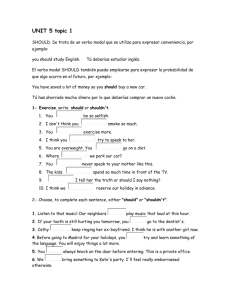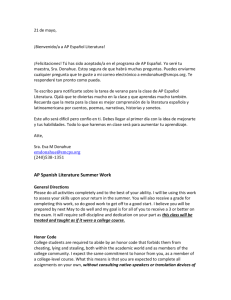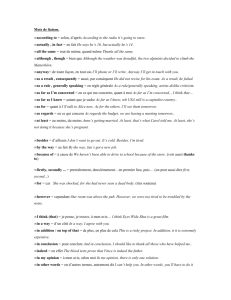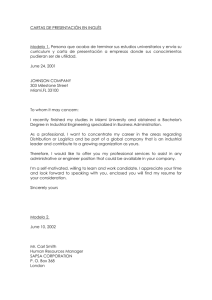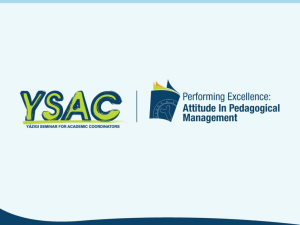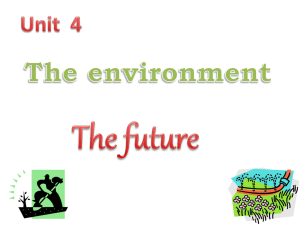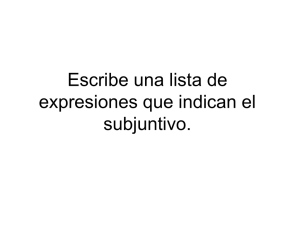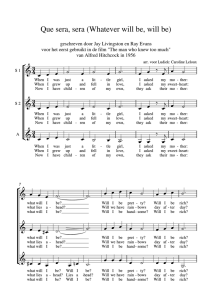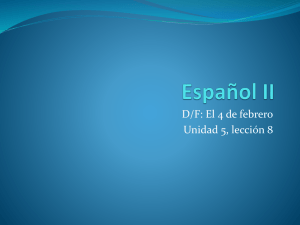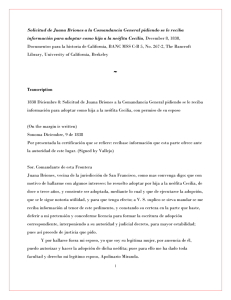Descargar - Colegio Villa María
advertisement
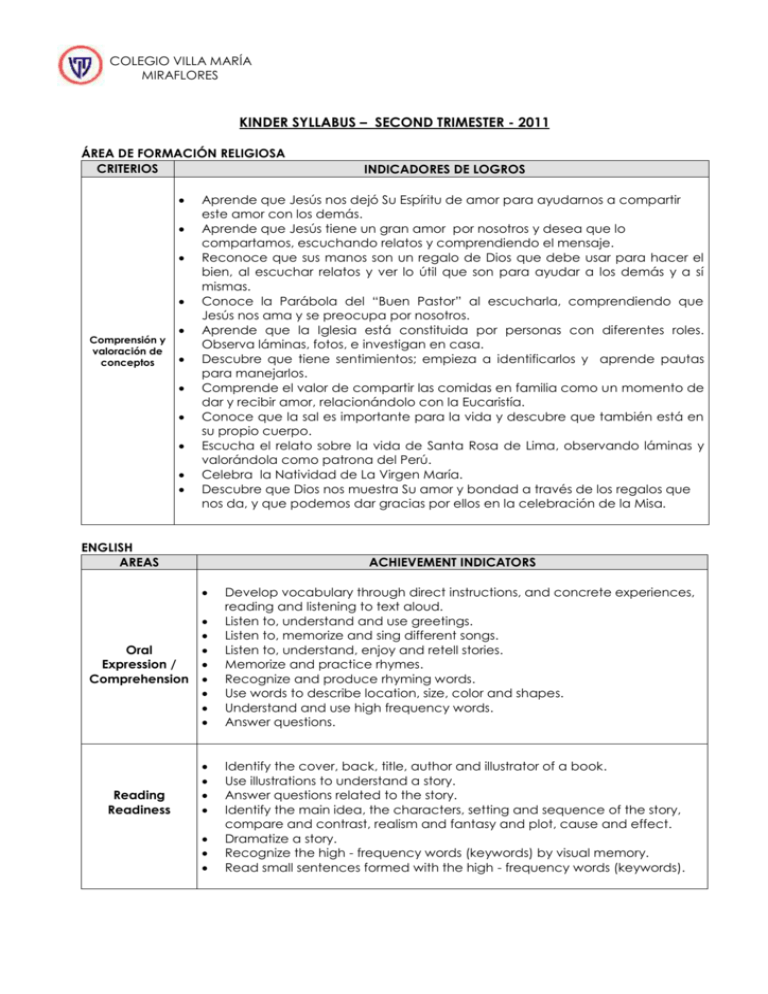
COLEGIO VILLA MARÍA MIRAFLORES KINDER SYLLABUS – SECOND TRIMESTER - 2011 ÁREA DE FORMACIÓN RELIGIOSA CRITERIOS Comprensión y valoración de conceptos Aprende que Jesús nos dejó Su Espíritu de amor para ayudarnos a compartir este amor con los demás. Aprende que Jesús tiene un gran amor por nosotros y desea que lo compartamos, escuchando relatos y comprendiendo el mensaje. Reconoce que sus manos son un regalo de Dios que debe usar para hacer el bien, al escuchar relatos y ver lo útil que son para ayudar a los demás y a sí mismas. Conoce la Parábola del “Buen Pastor” al escucharla, comprendiendo que Jesús nos ama y se preocupa por nosotros. Aprende que la Iglesia está constituida por personas con diferentes roles. Observa láminas, fotos, e investigan en casa. Descubre que tiene sentimientos; empieza a identificarlos y aprende pautas para manejarlos. Comprende el valor de compartir las comidas en familia como un momento de dar y recibir amor, relacionándolo con la Eucaristía. Conoce que la sal es importante para la vida y descubre que también está en su propio cuerpo. Escucha el relato sobre la vida de Santa Rosa de Lima, observando láminas y valorándola como patrona del Perú. Celebra la Natividad de La Virgen María. Descubre que Dios nos muestra Su amor y bondad a través de los regalos que nos da, y que podemos dar gracias por ellos en la celebración de la Misa. ENGLISH AREAS ACHIEVEMENT INDICATORS Oral Expression / Comprehension Reading Readiness INDICADORES DE LOGROS Develop vocabulary through direct instructions, and concrete experiences, reading and listening to text aloud. Listen to, understand and use greetings. Listen to, memorize and sing different songs. Listen to, understand, enjoy and retell stories. Memorize and practice rhymes. Recognize and produce rhyming words. Use words to describe location, size, color and shapes. Understand and use high frequency words. Answer questions. Identify the cover, back, title, author and illustrator of a book. Use illustrations to understand a story. Answer questions related to the story. Identify the main idea, the characters, setting and sequence of the story, compare and contrast, realism and fantasy and plot, cause and effect. Dramatize a story. Recognize the high - frequency words (keywords) by visual memory. Read small sentences formed with the high - frequency words (keywords). Phonics Writing Readiness Math Recognize the alphabet (from A to Z) Recognize consonants sounds : “Ii”, ”Nn”, Bb”, ”Rr”, ”Dd”, ”Kk”, ”Ff” ,”Oo” , “Hh ”, “Ll” Recognize short “a”, “o” and “i”. Identify sounds that are the same or different. Recognize and produce rhyming words. Segment a word into sounds. Identify and isolate initial, final and medial sounds in spoken words. Blend sounds orally to make words. Count syllables in words. Count words in sentences. Add, delete or substitute phonemes. Connect sounds to letters. Write letters correctly Copy letters and words from the chalkboard or from books. Recognize, compare and write numerals from 0 – 5. Use objects to order numbers from 0 – 5 in sequence. Use the words: first, second, third, fourth and fifth to describe position. Use objects to represent and count the quantities 6 - 10. Recognize, compare and write the numerals that describe the quantities 6 10. Use one-to-one correspondence and counting to compare groups and determine which has more, which has fewer or whether the groups are the same. Use objects to order numbers from 6 -10 in sequence. Recognize, count and write numbers from 11 – 20. Compare and order sets of objects by size and length. Order a set of objects from shortest to longest. Measure the length of objects using nonstandard units. Fine Motor Skills Gross Motor Skills Develop abilities and skills for graphic activities such as drawing, painting, cutting, and writing. Trace with correct force and precision: zigzag, circular and semicircular lines. Cut with correct force and precision: zigzag and curved lines. Develop the correct way to hold pencils, scissors, crayons, punchers, etc. and how to use them correctly. Develop eye-hand coordination through different activities and games: Tearing with fingers, modeling with clay, punching out, making paper balls, rolling, wrinkling, stretching, folding, etc. Realiza diferentes ejercicios de habilidades locomotoras. Trabaja en forma coordinada tareas de motricidad gruesa. Se desenvuelve con dominio motriz, encontrando soluciones y alternativas a tareas que se le presentan. Trabaja en patrón cruzado. Lanza, recibe y rueda diferentes materiales. Realiza balances, rueda y se desliza de diferentes formas. Responde a diferentes ritmos y marcha de acuerdo a su edad. Participa en Proyectos y juega cooperativamente con sus compañeras.
